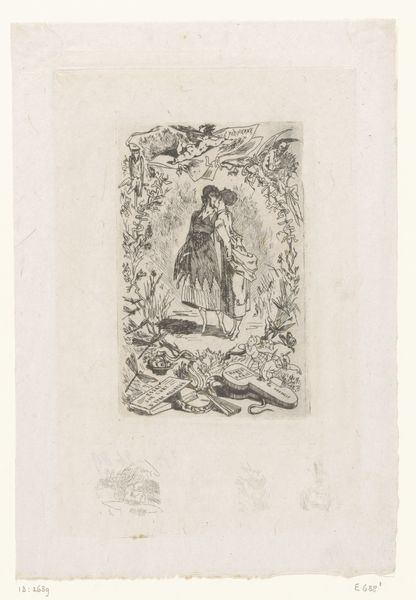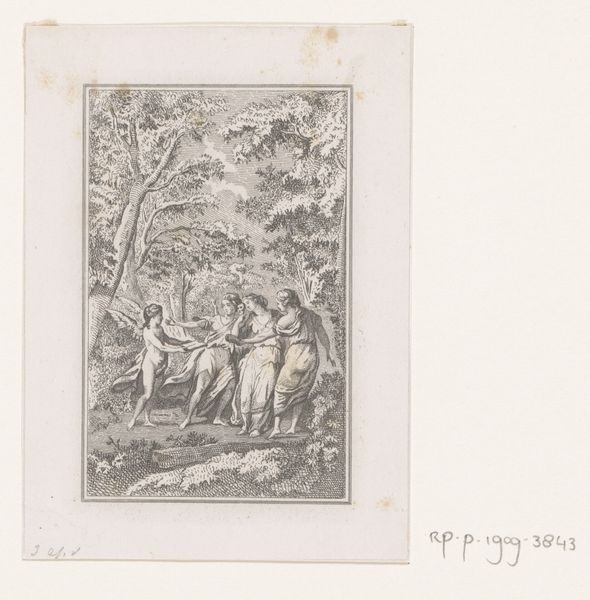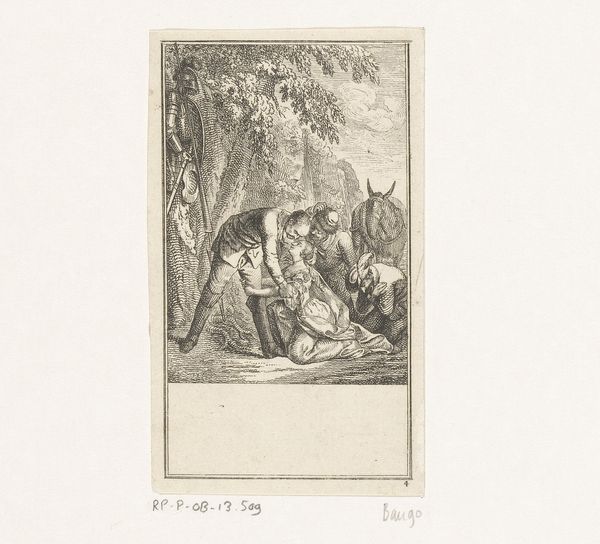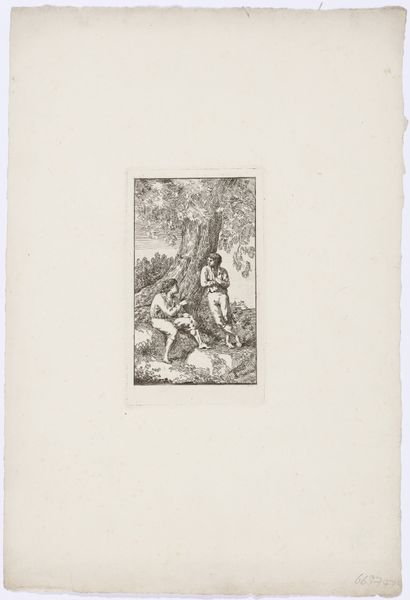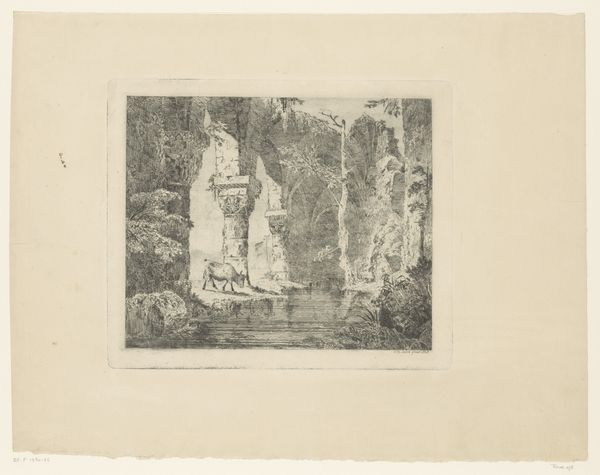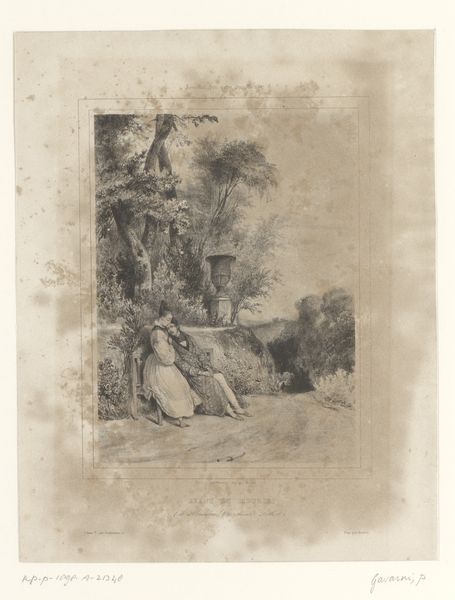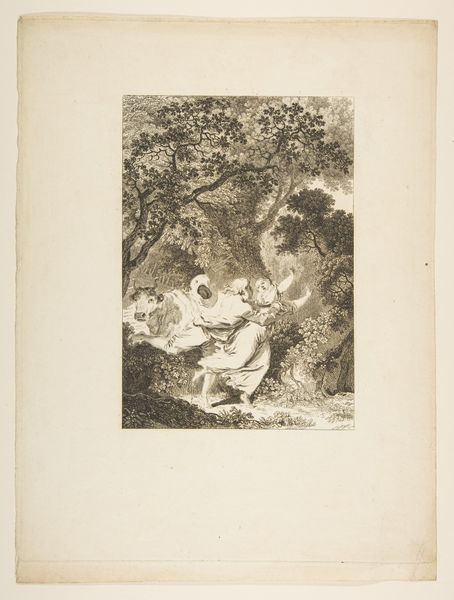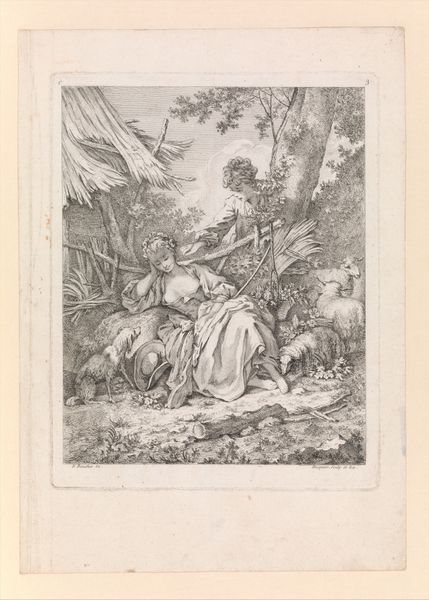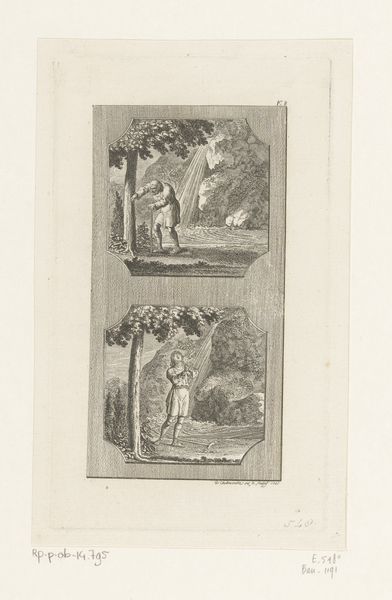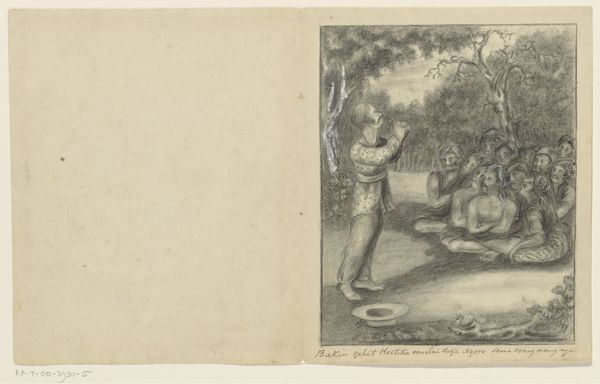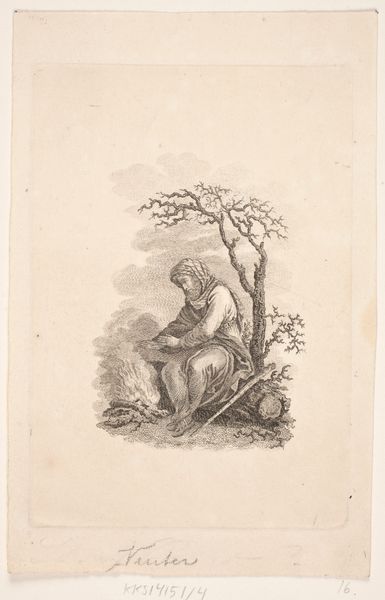
Rolf ontdekt Suavilde, die in een grot tot Thor en Balder bidt 1793
0:00
0:00
danielnikolauschodowiecki
Rijksmuseum
print, engraving
#
narrative-art
# print
#
figuration
#
romanticism
#
history-painting
#
engraving
Dimensions: height 128 mm, width 84 mm
Copyright: Rijks Museum: Open Domain
Editor: This engraving, created in 1793 by Daniel Nikolaus Chodowiecki, is titled "Rolf ontdekt Suavilde, die in een grot tot Thor en Balder bidt," which translates to "Rolf discovers Suavilde praying to Thor and Balder in a cave." The Romantic mood gives me a sense of hushed discovery, almost like witnessing a secret moment. What strikes you when you look at this print? Curator: What interests me is the positioning of Suavilde’s worship of Thor and Balder within a context of encroaching Christianity. How does the artwork implicitly portray the struggle of older belief systems against new, dominant religions, especially when seen through a lens of power dynamics? The image evokes a longing for the past, even if a past constructed through a specific cultural understanding. The male figure's intrusion into Suavilde's sacred space raises interesting questions about patriarchal disruption and the vulnerability of marginalized spiritual practices. What do you think about the power of this moment? Editor: That makes me consider the subversion of the piece - perhaps the moment wasn't about power as much as it was curiosity about difference. I wonder, can Romanticism be a decolonizing force if it allows the narratives of colonized people? Curator: I'm cautious of that claim; Romanticism had close links with Nationalism that facilitated a new type of empire, particularly since narratives were shaped by those with institutional power. Looking at this through the context of coloniality, consider how images of “pristine” nature or “ancient” religions can become tools for romanticizing the past. Who gets to control and represent the “past”, and for what ends? This romantic gaze essentializes Suavilde and others in similar positions to create simplistic portraits. Editor: That's insightful. I hadn't thought about how the narrative might inadvertently reinforce existing power imbalances rather than challenge them. Thanks, this lens truly changed how I interpret this piece. Curator: Indeed. Keep questioning who shapes the story, and why.
Comments
No comments
Be the first to comment and join the conversation on the ultimate creative platform.
